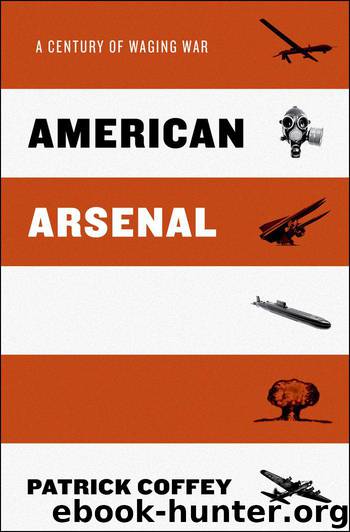American Arsenal by Coffey Patrick

Author:Coffey, Patrick [Coffey, Patrick]
Language: eng
Format: azw3, epub
Publisher: Oxford University Press, USA
Published: 2014-01-01T00:00:00+00:00
Truman’s decision to press ahead with the hydrogen bomb did not make building it possible. It changed neither nuclear physics’ principles nor physicists’ understanding of them. Teller’s “classic Super” consisted of a tank of liquid deuterium that would be ignited into fusion by the heat of a fission bomb. Fermi and physicists Stanislaw Ulam and Cornelius Everett did spreadsheet calculations—with paper and mechanical calculators, not with Microsoft Excel and computers—and their results were discouraging. A tank of liquid deuterium would ignite only if it contained a large amount of tritium, which could be produced only in limited amounts in the same nuclear reactors tied up in producing plutonium for atomic bombs. And if one end of the deuterium-tritium tank did ignite, the other end would burst before the fusion reaction reached it.
Meanwhile, Los Alamos planned a series of tests for 1951 that were code-named Greenhouse. Teller’s Booster design, with a deuterium-tritium mixture embedded in the fission core, would be tested first. The next test on the schedule, code-named Greenhouse George, was similar to the Fuchs–von Neumann idea: the deuterium-tritium mixture would be enclosed in a separate chamber that would receive a radiation burst from the fission bomb. Physicist Robert Jastrow said, “Teller was trying to get support for the H-bomb project, and since he could not figure out how to build an H-bomb, he thought up the [George] project instead, as a demonstration for the people back in Washington.”20 In November 1950, the GAC met at Los Alamos to review the negative spreadsheet calculations on the Super and the planned Greenhouse tests. Teller took the floor. He managed to insult his colleagues, saying that he thought Los Alamos might not be strong enough to develop the Super if the tests gave positive results. He demanded that the entire laboratory be put at his disposal for a year after Greenhouse, although he had no new ideas for making fusion work.
Then came the breakthrough—although whose breakthrough remains a matter of dispute. In December 1950, Stanislaw Ulam was attempting to increase the yield of fission bombs by using implosion. Rather than use chemical explosives to compress a plutonium core, as the Fat Man bomb used on Nagasaki had done, Ulam was considering using one fission bomb to compress another. Sometime in January, he saw a way to apply the same idea to a fusion bomb. His wife found him staring out the living room window. “I found a way to make it work,” he told her. “It is a totally different scheme, and it will change the course of history.” Ulam informed Norris Bradbury, Los Alamos’s director, and physicist Carson Mark the next day, before he spoke to Teller. Teller had considered compression many times, and he insisted it would make no difference: the fusion reaction would occur faster, he said, but the deuterium-tritium tank would also explode faster, exactly cancelling any advantage. In his conversations with Ulam and Mark, however, he realized he was wrong. The only compression that he had previously
Download
This site does not store any files on its server. We only index and link to content provided by other sites. Please contact the content providers to delete copyright contents if any and email us, we'll remove relevant links or contents immediately.
| Africa | Americas |
| Arctic & Antarctica | Asia |
| Australia & Oceania | Europe |
| Middle East | Russia |
| United States | World |
| Ancient Civilizations | Military |
| Historical Study & Educational Resources |
The Radium Girls by Kate Moore(11867)
100 Deadly Skills by Clint Emerson(4798)
Rise and Kill First by Ronen Bergman(4658)
The Templars by Dan Jones(4594)
The Doomsday Machine by Daniel Ellsberg(4375)
The Rape of Nanking by Iris Chang(4103)
Killing England by Bill O'Reilly(3927)
Hitler in Los Angeles by Steven J. Ross(3865)
Stalin by Stephen Kotkin(3826)
12 Strong by Doug Stanton(3456)
Hitler's Monsters by Eric Kurlander(3243)
Blood and Sand by Alex Von Tunzelmann(3101)
Darkest Hour by Anthony McCarten(3040)
The Code Book by Simon Singh(3023)
The Art of War Visualized by Jessica Hagy(2892)
Hitler's Flying Saucers: A Guide to German Flying Discs of the Second World War by Stevens Henry(2665)
Babylon's Ark by Lawrence Anthony(2489)
The Second World Wars by Victor Davis Hanson(2452)
Tobruk by Peter Fitzsimons(2416)
